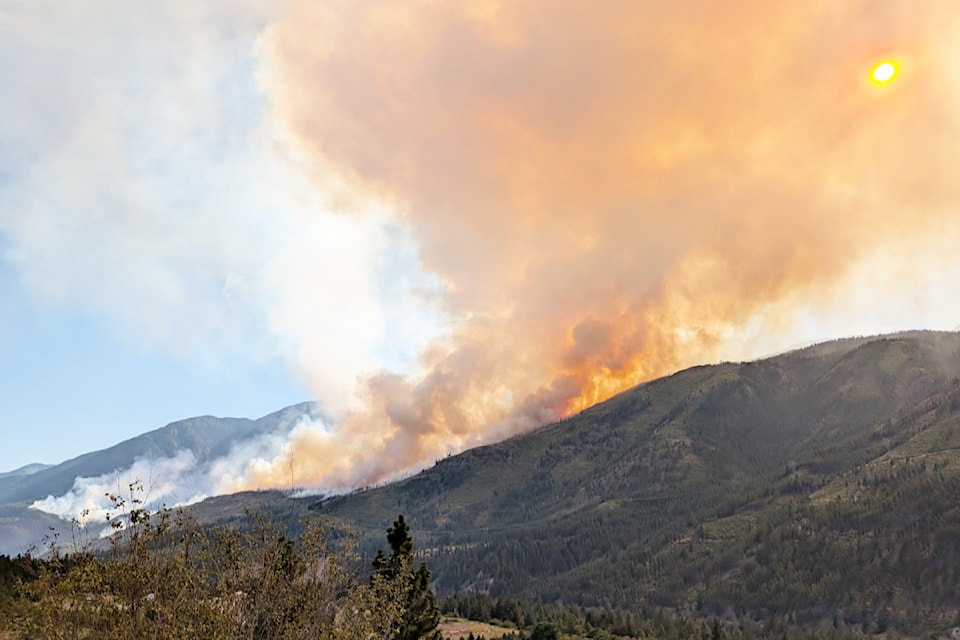The BC Wildfire Service (BCWS) reports that as of noon on Sunday, Aug. 3 the Cantilever Bar wildfire southwest of Lytton had grown to 1,426 hectares.
The fire showed modest growth over the weekend. However, BCWS notes that the increase in size is largely due to more accurate perimeter mapping of the fire.
The fire — which was discovered on Monday, July 28 — is suspected to have been human-caused. It is approximately 10 kilometres southwest of Lytton, on the west side of the Fraser River.
Lytton First Nation has an in place affecting two properties in the area of the fire. Evacuation alerts have been issued by , , , and the .
Smoke from the fire is highly visible to travellers along Highways 1 (Trans-Canada) and 12, but both highways remain open. Drivers are urged to drive with extra caution and care, watch their speed, and be aware of their surroundings.
The fire is displaying Rank 2 behaviour, with pockets of Rank 3, meaning a low-vigour surface fire with pockets of occasional candling, but a slower rate of spread.
Fire behaviour has the potential to increase with daytime heating and solar radiation, which has dried out fuels in the area. Fire growth has been predominately upslope to the west and north.
Over the weekend of Aug. 1 there has been a slight cooling-off in the region, with temperatures down from the highs of 39 C seen last week. The relative humidity is 27.
An incident management team has been assigned to the fire, and there are 77 wildland firefighters and 14 structure protection personnel responding. Seven helicopters and three pieces of heavy equipment are also responding.
Crews are applying both direct and indirect attack methods to action the fire, and are utilizing small-scale hand ignitions and fire suppression activities to tie into roads and natural features acting as guard along the eastern flank. Limiting fire growth so that it does not threaten structures remains a priority. Aerial resources are supporting the response with water delivery, gear transport, and reconnaissance



